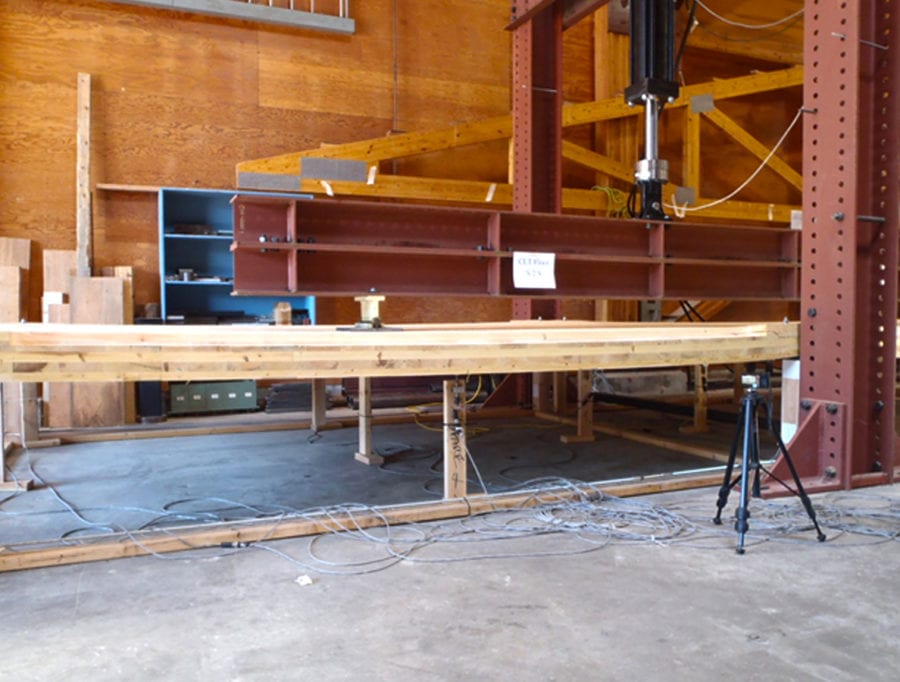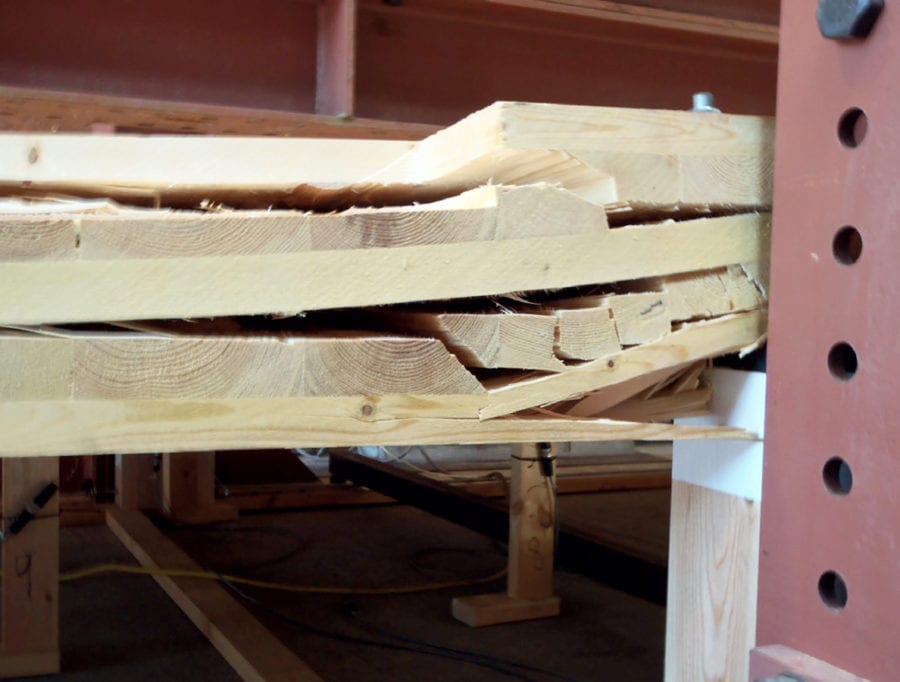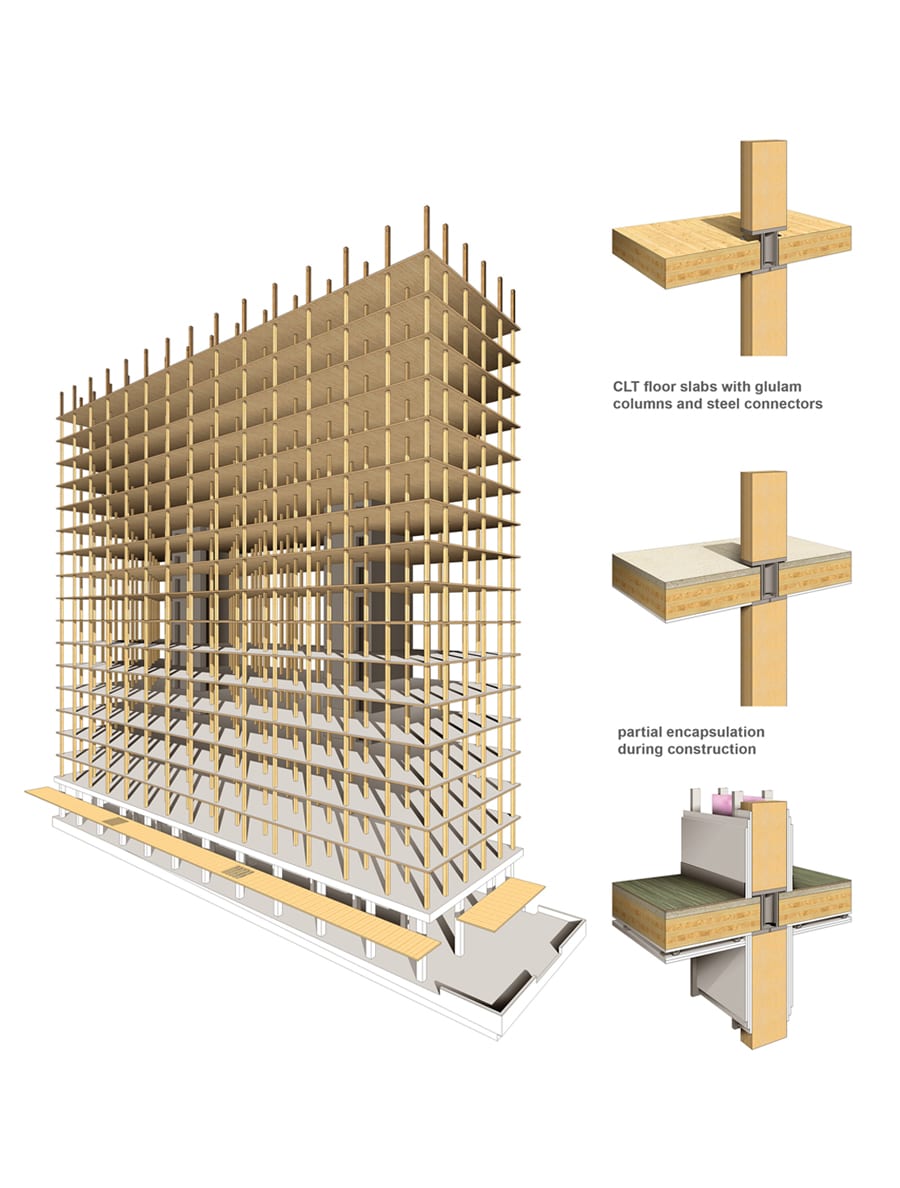The 18-storey Tallwood House at Brock Commons at the University of British Columbia (UBC) is one of Fast + Epp’s most ground-breaking projects known for its unique use of the cross-laminated timber (CLT) floor system. Although CLT is often used as a one-way decking system, the Tallwood House aimed to make use of the product’s two-way spanning capability for its gravity system. Spanning in both directions helped eliminate the use for beams, allowing for clean, open spaces.
Project Essentials
- LocationVancouver, BC
- PartnerFP Innovations
- TypePhysical Testing Program
- FundingTall Wood Building Demonstration Initiative
- ProjectTallwood House at Brock Commons


